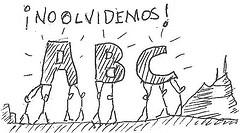 The cognitivo-mannering therapy (TCC) works with the hypothesis of that our cognitions influence our emotions that in turn influence our behaviors and physiological reactions. On the basis of this, differently of what many believe, is not the situations or events that define as we feel in them or as we act, but yes the perception or interpretation that we give for these events, that is, the explanation that for us is given. This perception or explanation of the objective reality comes from thoughts (also called cognitions), which give the tone of as we see the things. Being thus, we directly do not relate in them with the objective reality, but with the interpretation that we make of it. These interpretations appear in our minds, being able to come in form of thought or image. P.A are called automatic thoughts (.) and differently of the conscientious and voluntary thoughts, on these we do not have control.
The cognitivo-mannering therapy (TCC) works with the hypothesis of that our cognitions influence our emotions that in turn influence our behaviors and physiological reactions. On the basis of this, differently of what many believe, is not the situations or events that define as we feel in them or as we act, but yes the perception or interpretation that we give for these events, that is, the explanation that for us is given. This perception or explanation of the objective reality comes from thoughts (also called cognitions), which give the tone of as we see the things. Being thus, we directly do not relate in them with the objective reality, but with the interpretation that we make of it. These interpretations appear in our minds, being able to come in form of thought or image. P.A are called automatic thoughts (.) and differently of the conscientious and voluntary thoughts, on these we do not have control.
They come in the same way they are gone, without many times in giving account to them of them. Simply, ' ' they appear in ours cabeas' ' , without being fruit of the desire or reflection and, exactly that let us not know of its existence (therefore generally they are brief and fugazes), they influence our state of mood and they can cause or influence certain emotions. For not terms ' ' conscincia' ' of its existence, generally they are not questioned and they are accepted as true. The all moment we are having different types of thought and when we perceive some alteration of mood, a new emotion appearing, a physiological reaction or still an intention to emit a behavior or the action in itself, all these phenomena had been fruit of the thought that if anticipated they. The description below demonstrates this sequence in more visual and didactic way: Activator: Event or activator situation (Trigger/estmul B – (Beliefs) Beliefs and Thoughts: Question key: ' ' What it is passing in mine head? ' ' C? Consequences: Emotion, physiological reaction, behavior. In this way, if to perceive that ahead of an activator situation (a), we have an automatic thought (b), that generates consequences (c), we can in them make use of this information. It is exactly this that the TCC makes soon at the beginning of its process. It considers that if she monitors (attention is useful) whenever it has some change in the mood or a new emotion, what if ' ' she finished to pass for cabea' ' or, if she makes the question: ' ' What she was passing in my head still now? ' '. This is the beginning of a process of cognitivo-mannering change.